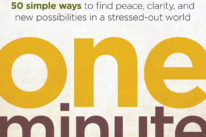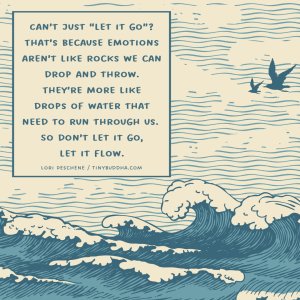
“The present moment is filled with joy and happiness. If you are attentive, you will see it.” ~Thich Nhat Hanh
A while back, someone very dear to me entered intensive care. He’s someone I’ve learned so much from, and yet never met. I’ve read dozens of his books, both listened to and watched countless lectures, as well as been inspired to study Zen because of him.
On Friday, November 14th, after suffering a brain hemorrhage, Thich Nhat Hanh, a Vietnamese Zen master and peace activist, went into a coma. For the past few weeks, Thay, as his students call him (teacher in Vietnamese), had visited the hospital on a few occasions due to a decline in his health.
At the age of eighty-eight, he’s lived a long and amazing life.
He’s considered one of the two foremost Buddhist teachers in the world, next to the Dalai Lama, and was nominated for the Nobel Peace Prize by Martin Luther King, Jr. himself. Now, he and his loving community must work to help heal the damage and hope that he can make a full recovery.
I was inspired to write something about Nhat Hanh, who helped me overcome my own anxiety when I was overwhelmed after the birth of my first son. I didn’t know how to pay rent and support my family, and closing in on thirty without having accomplished anything of value in my life, I felt like a failure who was quickly running out of time.
At Plum Village, Thich Nhat Hanh’s monastery in France, a bell sounds at various moments in the day. The bell is used to notify the monks, nuns, and other visitors of important events, such as the beginning of meditation sessions, lectures, and mealtime.
But it’s also used for another reason. Any time the bell sounds, literally every waking soul at Plum Village stops. They all just… stop. And in that moment, while the bell sounds, they practice mindful breathing.
Every monk, nun, and visitor breathes in with mindfulness and breathes out with mindfulness. This is the practice of “going home,” and it’s the practice of reuniting mind and body as one in order to find peace within ourselves.
The way most of us live our lives, we’re halfway in our heads, bouncing around in an endless stream of thoughts, and halfway in the present moment, only partially awake to what we’re doing.
This state of semi-consciousness, or mind dispersion, is a state where we’re unable to attain complete rest, our minds are perpetually clouded, we build up stress and anxiety, and we shut off our own source of creativity. In this state, we can never find peace or complete relaxation.
This semi-conscious state, or mind dispersion, is what the Buddha often referred to as our “monkey mind.”
Our monkey mind is constantly bouncing from one thought to another. We’re doing one thing (body) but thinking about another (mind).
You’re driving home from work while you’re thinking about work, and then bills, and then dinner, and then that dinner date with your old friend coming up, and then your daughter’s school project, and then whatever happened to your favorite band because they seemed to drop off the map, and then “When was that TV special again?”
Then you think about work again, oh and then that sounds good for dinner, and then you look in your overhead mirror and think, “I look tired today,” and then a Sit-And-Sleep commercial for some reason pops into your head and so you start thinking about how you really should get a new mattress soon, and then you think about home again and how the day is passing so quickly, and then…it never ends.
Mindfulness delicately brings the mind to rest and reunites body and mind as one force.
When you walk to work, you’re walking to work, and you’re enjoying the walk with all of your being. You’re not thinking about what’s for dinner or what you’ll say to your boss about that project when you get into the office while walking.
Your body is walking and your mind is at rest. When you drive home, you know you’re driving. You’re not letting yourself be distracted by the passing billboard advertisements or thinking about your overdue bills.
You’re truly enjoying the drive home in peace and quiet. When you’re sitting down to play with your children, you’re fully present for them, giving them your complete and undivided attention. When you live with mindfulness you’re able to truly appreciate the presence of your loved ones.
We can use the same principle of the bell used at Plum Village to find peace and relaxation in our everyday lives. By setting up simple alarm reminders on your phone or posting signs on the walls of your bedroom, restroom, or office, you can create your own “bell of mindfulness.”
Set an alarm.
Set an alarm to go off every hour, two hours, three hours, or whatever is comfortable for you. (I do once every hour.) Plan to just sit and be completely aware of your breathing for about one minute every time the alarm goes off. It’s just one minute, so it’s easy to fit it into your daily schedule.
Stop and breathe mindfully.
Every time the bell goes off, I imagine the bell sounding at Plum Village. No matter where I am, I transport myself to a place of peace and quiet.
When this bell sounds, everything stops. I don’t listen to the excuses I try to give myself about “Oh, let me just finish this one thing,” or, “I’ll get to that in just a minute,” I stop everything and just breathe mindfully.
No matter where I am, I stop. If I’m not comfortable, I immediately go somewhere that I am. Just breathe. Let this be your daily vacation time.
No matter where you are, for one minute every hour you’re transported to a place where you can find peace and tranquility. When you come back you’ll feel refreshed and ready to tackle anything.
Or, use signs.
Toward that same end, you can also post physical signs that you type or handwrite and place them on the wall of rooms you walk into every day, such as your restroom, kitchen, office, and even your car. You can write or draw whatever you want on it as long as it reminds you to be mindful during your daily life.
For instance, you could have a poster or sign that symbolizes breathing meditation in your bedroom that sits on the back of your door. This way, each time you walk out of your bedroom in the morning, you’re reminded to stop and breathe mindfully for a moment before exiting.
If you tend to rush around at the office and build up most of your stress and anxiety there, you can place one on the back of your office door or laminate and place a small one on the surface of your desk.
It doesn’t matter what you use, as long as it reminds you to be mindful throughout your day and helps you find peace and joy in the present moment. Use the bell of mindfulness to ground yourself to the present moment, and find peace and joy in each and every day.
About Matt Valentine
Matt Valentine is a father, husband, and a self-published author. He writes weekly on his blog, Buddhaimonia.com, about everything from spirituality to self-mastery. You can get his eBook, The Little Book of Mindfulness, free by joining his newsletter here.













 Though I run this site, it is not mine. It's ours. It's not about me. It's about us. Your stories and your wisdom are just as meaningful as mine.
Though I run this site, it is not mine. It's ours. It's not about me. It's about us. Your stories and your wisdom are just as meaningful as mine. 